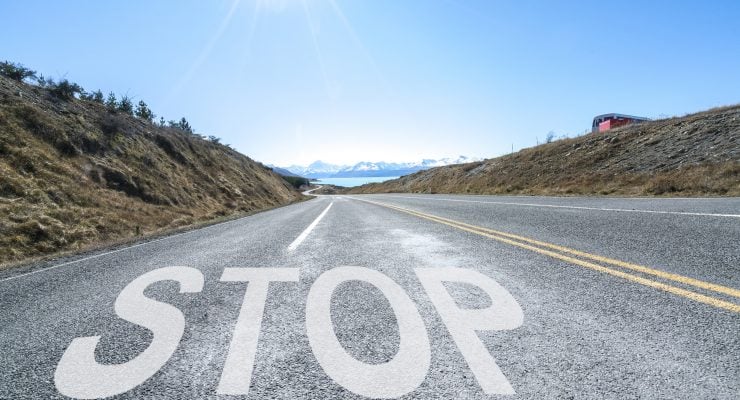As a pvtistes.net cofounder, backpacker and former Working Holiday visa holder, I’ve been stressing how crucial purchasing travel insurance is for 15 years.
And I do follow my own advice.
I buy Globe Partner insurance coverage before every trip—this is the tourist version of the reliable Globe WHV insurance we recommend for Working Holiday adventures.
This time, I was going to Quebec and I was fully aware that healthcare is expensive in Canada if you’re not a resident, so I bought the coverage I needed.
Well, I can confirm it was a wise decision.
When I arrived in Canada, I started feeling a nagging pain radiating from my collarbone and soon it reached my neck, my arm, forearm and hand.
This was on Thanksgiving weekend, so terrible timing to see a family doctor. Instead, I made an appointment with an osteopathic manual practitioner in Montreal—it helped me in the past, in France.
I paid $100 but it didn’t help. Looked like I needed traditional medicine.
How I found my medical appointment in Montreal
I Googled “walk-in clinic Montreal” and I found the CLSC (“Centre Local de Services Communautaires”) Sainte-Catherine, not far from where I was staying.
Canadians who head to the hospital for non-emergency issues can expect to wait for hours. Tourists too, and on top of that, this is the most costly option—expect to pay $700-$1100 upfront. This is just for a consultation, additional exams (i.e. X-ray for instance) and medication are added to the bill.
So I headed to a walk-in clinic, the best option in my case.
If you’re heading to Canada with an IEC permit and Globe WHV insurance coverage, you can also use a telehealth service. This option is included in your insurance policy.
Once at the CLSC, a lovely employee told me that they were booked for the day, never mind that it was only 9:30 a.m. She sent me to a walk-in clinic and told me it would be cheaper, anyway. Apparently, a consultation fee was $300.
Lesson learned, in Quebec, CLSCs are front-line healthcare providers but they are not walk-in clinics.
I left with a list of local walk-in clinics. The first one I called offered an appointment for the next day at 2:30 p.m. I took it because I wasn’t sure I could see a doctor sooner.
The consultation experience
I still checked out another walk-in clinic on my way.
The receptionist told me to wait—the fact I felt pain in my left arm must have been alarming enough because she did turn away several other people later.
Tip: Book your appointment as soon as you feel you may need to see a doctor. You can always cancel it later. Later in the evening, I cancelled my own 2:30 p.m. appointment for the next day.
I had to show my passport (since I don’t have a provincial health card as a tourist) and pay $200.
Ten minutes later, a medical assistant asked me a few questions and checked my blood pressure.
Then I saw a doctor… for four or five minutes, which is about the average duration of a medical consultation in Canada(!).
The doctor didn’t check my back. He told me to take off my sweater, asked me if I could lift my arm, and briefly put his hand on my shoulder. “Tendonitis.” He wrote a prescription and that was it.
Tip: Ask the doctor to write down why you sought medical help and attach it to the prescription you are sending to your insurance company. This way, your provider will be able to see whether your medical concern is covered or not.
The prescription and the pharmacy
I went to the pharmacy where I was given 240 pills of acetaminophen, which is basically a light painkiller.
But they were split into two bottles, a big one and a small one, and the sticker said: “2 pills, 4 times a day.” I thought that in North America, pharmacies always give the exact number of pills and I assumed it was two different kinds of medication. Oops. I took too much of it until I actually looked at the bottles carefully. There’s a risk of liver injury when you take too much acetaminophen…
Tip: Ask the pharmacy for a copy of your prescription. Pharmacies tend to keep the original and you will need this document during the insurance claim process.
Also, read the sticker on the bottle carefully. It took me too long to realize I was taking twice the amount of the same medication.
In Canada, you can dial 811 for non-urgent health advice. This is a great way to ease concerns or seek medical help if something is bothering you.
Wrong diagnosis
The flight back to France was very uncomfortable because I was in a lot of pain.
I went to see my regular doctor in France—she was shocked by the number of painkiller pills I was prescribed and she also questioned the diagnosis, formulated in seconds without a thorough examination.
Turned out I had a herniated cervical disk.
This is not the first time I hear about wrong diagnoses in Canada…
When in doubt, don’t hesitate to use the telehealth service included in your Globe WHV insurance to seek a second opinion.
The insurance claim process
The full claim process for Globe WHV insurance is detailed in this article. Basically, for medical expenses up to €500, claims are submitted online, and for expenses over €500, claims must be submitted by mail.
You will have to submit:
- Your medical bills, including an explanation of the reason why you sought medical help.
- Your prescription
- Your pharmacy receipt
You may also be asked for a copy of your Working Holiday permit and plane tickets.
It took less than a week for my claim to be processed and I received $200 (walk-in clinic bill) plus $68 (medications).












 Français
Français English
English




0 comments
{{like.username}}
Loading...
Load more